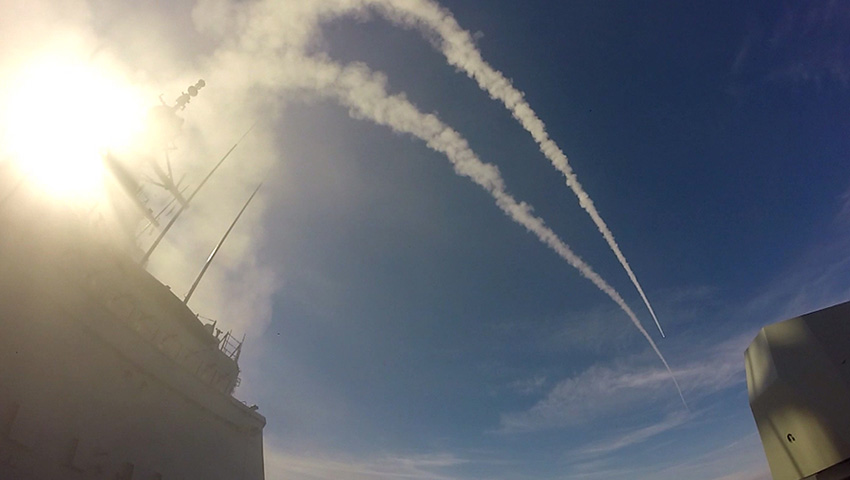The Royal Australian Navy’s first Aegis combat system based guided missile destroyer, HMAS Hobart, has returned home after conducting weapons and systems evaluations with the US Navy off the west coast of the US.
Hobart is the first ship of its class and the operation marked the first international partner to work in sync with US forces using the Aegis combat management system.
The US Navy was quick to put Hobart through her paces as it conducted operational testing for the ship's combat system and co-operative engagement capability (CEC).
Centred around the AN/SPY-1 radar, Aegis is a fully integrated combat system. Providing full 360-degree, 3D tracking capacity, Aegis is capable of simultaneously defending against attack from land targets, submarines and surface ships while automatically protecting the fleet against aircraft cruise missiles and ballistic missiles.
This integrated combat system serves to establish Aegis as a central component of the Integrated Air and Missile Defence (IAMD), providing robust anti-air warfare (AAW) capabilities, with ballistic missile defence capabilities.
"We were presented with some of the world’s toughest and most challenging threats; modern anti-ship missiles, maritime strike aircraft, fighters and high speed attack craft. On every occasion we successfully defended all threats," said Commanding Officer of HMAS Hobart, Captain John Stavridis.
CEC is a system of hardware and software that allows the sharing of radar and identification, friend or foe sensor data on air targets among CEC equipped units. CEC's two major system functions consist of a co-operative engagement processor for sensor networking and a data distribution system (DDS) for real-time communications among co-operating units.
Put simply, CEC is a real-time ‘sensor-netting’ system that brings together radar data into a single integrated air picture from geographically dispersed ships, aircraft and ground-based units. This integrated picture improves task force effectiveness by enabling longer range, co-operative or layered engagements.
"None of this would have been possible without the incredible men and women who operate HMAS Hobart, they took this unknown and untested first-of-class ship and transformed her into a warship that is truly first class," CAPT Stavridis explained.
The aim of the exercise was to "achieve a sustainable level of combat and weapon system readiness", and Able Seaman Electronic Technician Stacey Verrall said the crew were successful in that.
"This is what we have trained for and to be able to conduct the missile firings here has been a terrific opportunity and a humbling experience," AB Verrall said.
HMAS Hobart and her two sister ships, HMA Ships Brisbane and Sydney, are Hobart Class Air Warfare Destroyers based on the Spanish F-100 frigates. The Hobart Class Combat System is built around the Aegis Weapon System, incorporating the state-of-the-art phased array radar, AN/SPY 1D(V), will provide an advanced air defence system capable of engaging enemy aircraft and missiles at ranges in excess of 150 kilometres.
The vessels will be capable across the full spectrum of joint maritime operations, from area air defence and escort duties, right through to peacetime national tasking and diplomatic missions.






